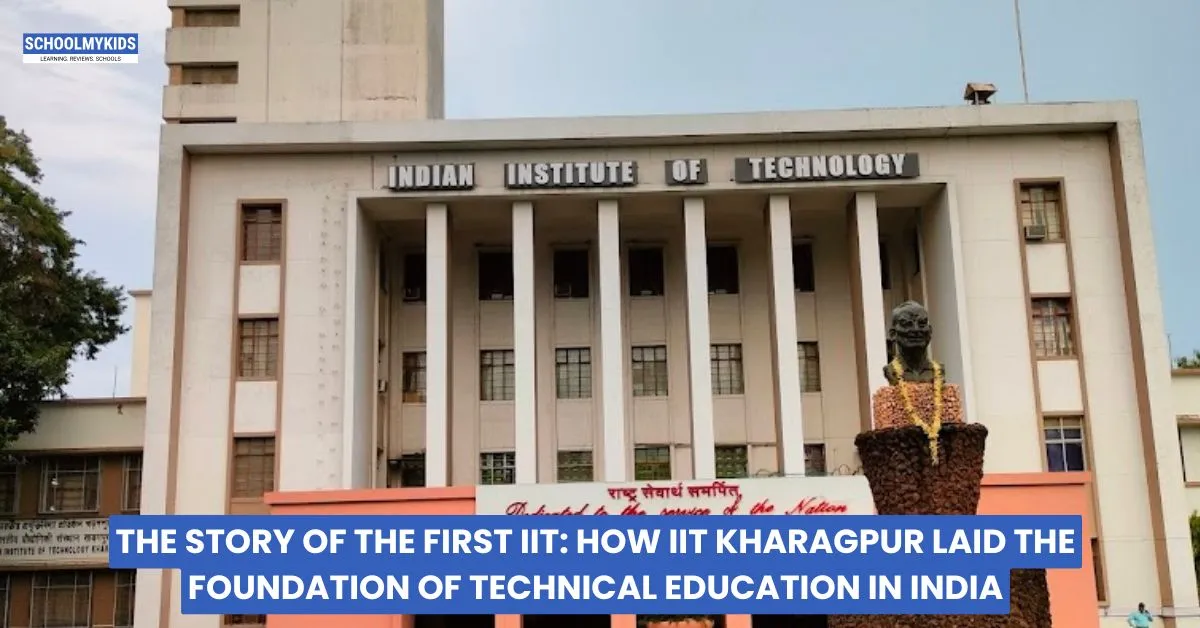Introduction
The Indian Institutes of Technology (IITs) are today considered the pinnacle of technical education in India. They are globally recognized for producing top-tier engineers, scientists, and innovators. But this legacy began with a single institution—IIT Kharagpur, the very first IIT established in post-independence India. The story of how it came to be is deeply rooted in the country’s vision for self-reliance, development, and educational excellence.
The Need for Technical Institutions in Post-Independence India
In the aftermath of independence in 1947, India faced the daunting challenge of nation-building. While industrialization was identified as a key pathway to economic growth, the country lacked the skilled manpower to lead this transformation. There was an urgent need for institutions that could produce engineers of global standards who could contribute to infrastructure, defense, manufacturing, and innovation.
Recognizing this gap, the government sought to establish institutes of higher technical education based on the models of MIT and other advanced institutions in the West.
The Sarkar Committee and the IIT Vision
In 1945, even before independence, the British colonial government had constituted a committee under the leadership of Nalini Ranjan Sarkar, then vice-chairman of the Executive Council of Bengal. The Sarkar Committee submitted its recommendations in 1946, proposing the establishment of at least four high-level engineering institutions across India.
These institutions were envisioned to:
- Provide undergraduate and postgraduate engineering education
- Promote scientific research
- Be autonomous and nationally important
This recommendation laid the foundation for what would later become the Indian Institutes of Technology.
Choosing the Site: Why Kharagpur?
After independence, the Indian government moved quickly to act on the Sarkar Committee’s report. In 1950, Kharagpur, a town in West Bengal, was chosen as the location for the first IIT. The site selected was the Hijli Detention Camp, a colonial-era prison where many Indian freedom fighters had been jailed—and some even shot during British rule.
The symbolic transformation of a place once associated with oppression into a hub of education and innovation reflected the new India’s vision and resolve.
Establishment of IIT Kharagpur
IIT Kharagpur was officially established on 18 August 1951, making it the first of the IITs. The inaugural academic session began with:
- 224 students
- 11 teachers
- Classes held in temporary facilities within the Hijli campus
The institute was formally inaugurated by Prime Minister Jawaharlal Nehru in 1956. During his address, Nehru referred to IIT Kharagpur as a “temple of modern India”, underscoring its importance in shaping the country's future.
Growth, Structure, and Global Recognition
IIT Kharagpur was granted the status of an autonomous institution of national importance through the Institutes of Technology Act, 1961. Over time, the model developed at Kharagpur became the blueprint for the other IITs in Mumbai, Chennai, Kanpur, Delhi, and beyond.
Key features of the IIT model included:
- High-quality faculty
- Rigid merit-based admissions
- Residential campuses
- Emphasis on both theoretical and practical learning
IIT Kharagpur rapidly expanded its academic departments, research labs, and student intake. It also began attracting students from across India, creating a pan-national community of scholars and technocrats.
Legacy and Impact
The legacy of IIT Kharagpur goes beyond academics. It set the standard for excellence in engineering education and inspired the formation of similar institutions across India. Its alumni have gone on to:
- Lead global technology companies
- Found successful startups
- Serve in senior government and policy roles
- Contribute to scientific innovation and infrastructure development in India
More than 70 years since its founding, IIT Kharagpur remains a symbol of India’s aspirations, resilience, and pursuit of knowledge.
Conclusion
The story of IIT Kharagpur is not just about the birth of an institute—it is about a nation’s determination to invest in its youth, to replace colonial legacies with centers of excellence, and to build a self-reliant future. From a former prison to a world-class institute, IIT Kharagpur stands as a powerful reminder that education can truly be the foundation of transformation.








Be the first one to comment on this story.